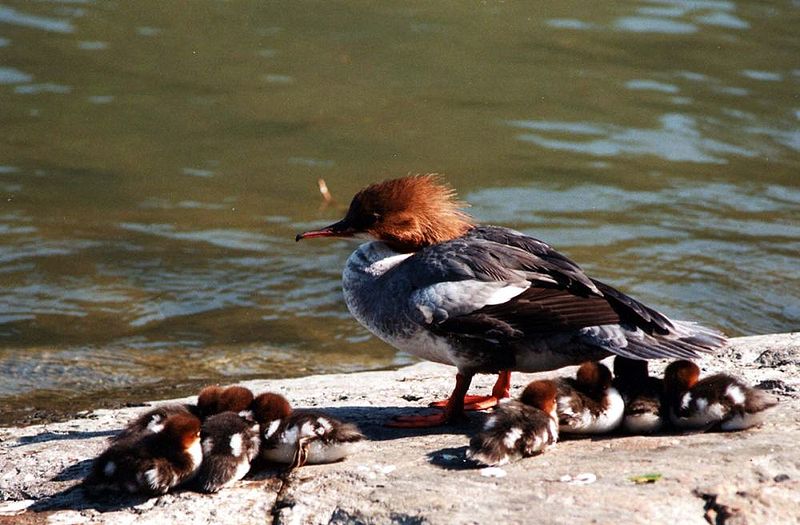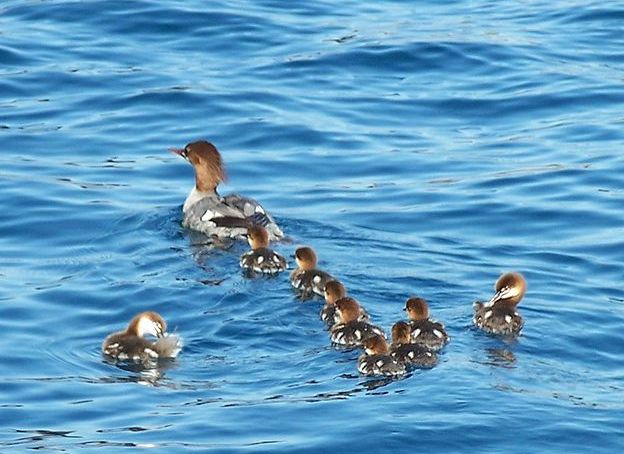Reproduction
 Common
mergansers participate in sexual reproduction. Both the males
and females of common merganser reach sexual maturity around the
age of two. Mates are selected during late winter. The males
court the females by circling them and displaying courtship
posture. The male extends his neck with the head feathers erect
and makes a distinctive guitar-like sound. A lot of chasing and
fighting goes on between males during courting times.
Common
mergansers participate in sexual reproduction. Both the males
and females of common merganser reach sexual maturity around the
age of two. Mates are selected during late winter. The males
court the females by circling them and displaying courtship
posture. The male extends his neck with the head feathers erect
and makes a distinctive guitar-like sound. A lot of chasing and
fighting goes on between males during courting times.
By spring time, mates are selected and the birds are ready to
fly north to the breeding sites. The breeding grounds are
primarily in the northern portion of North America, Europe, and
Asia. Breeding usually begins sometime around May and June.
Common mergansers prefer to nest in hollow trees along the shore
lines. When such areas are limited, females will build their
nests on the ground, on cliff ledges, under heavy vegetation, or
even in abandoned buildings. Each female can produce anywhere
from five to fifteen eggs. Usually each clutch contains seven to
nine eggs. The average size of the eggs is 64.3mm by 44.9mm.
Common merganser eggs lack luster and have a pale ivory-yellow
color.
 The
hatching time can be anywhere from 28 to 35 days. After the eggs
hatch, the young birds will follow their mother to feeding
sites. Right after the young leave the nest they can swim and
obtain food very easily. By day eight, the young birds are
excellent swimmers and divers. Mothers typically abandon their
young 30 to 50 days after hatching, before they develop the
ability to fly. The males will leave the breeding grounds once
incubation begins. Young common mergansers are very independent
and receive very little parental care.
The
hatching time can be anywhere from 28 to 35 days. After the eggs
hatch, the young birds will follow their mother to feeding
sites. Right after the young leave the nest they can swim and
obtain food very easily. By day eight, the young birds are
excellent swimmers and divers. Mothers typically abandon their
young 30 to 50 days after hatching, before they develop the
ability to fly. The males will leave the breeding grounds once
incubation begins. Young common mergansers are very independent
and receive very little parental care.
Questions? Comments? Concerns? contact me at bales.aman@students.uwlax.edu
For more interesting organisms visit multiplerganisms.net